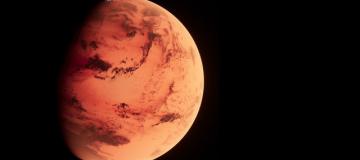
Building planetary atmospheres from magma oceans
Speaker: Dr. Paolo Sossi (Eth, Department of Earth Sciences, Zürich, Switzerland) - Tuesday, 22nd March – 4:30 PM | Aula Arduino
22.03.2022
Atmospheres around some rocky planets may be germane to the development of life. Owing to the energy deposited during accretion, most are thought to have undergone at least one magma ocean stage in their lifetime. In order to assess the diversity of planetary atmospheres produced during this stage, requires examination of the extent and nature of mass exchange between a magma ocean and its surrounding atmosphere. To do so, we present experimental determinations of how iron oxidation state in molten peridotite - a proxy for the bulk composition of Earth's mantle - varies with the oxygen partial pressure of the atmosphere. Further, the solubility of water in peridotite is determined as a function of water partial pressure. Together, they are combined with numerical models of magma ocean crystallisation to compute pressures of CO, CO2, H2, H2O and CH4 generated for Earthsized planets over a range of O2 partial pressure, C/H ratio and water ocean equivalents. We show that atmospheres in equilibrium with magma oceans at neutral oxidation states typical of Earth’s mantle will be carbon-rich, while H2O is largely dissolved in the interior. The extent of water outgassed then depends on the type of crystallisation occurring in the magma ocean during cooling. Therefore, the physico-chemical properties of planetary interiors control those of their atmospheres.





